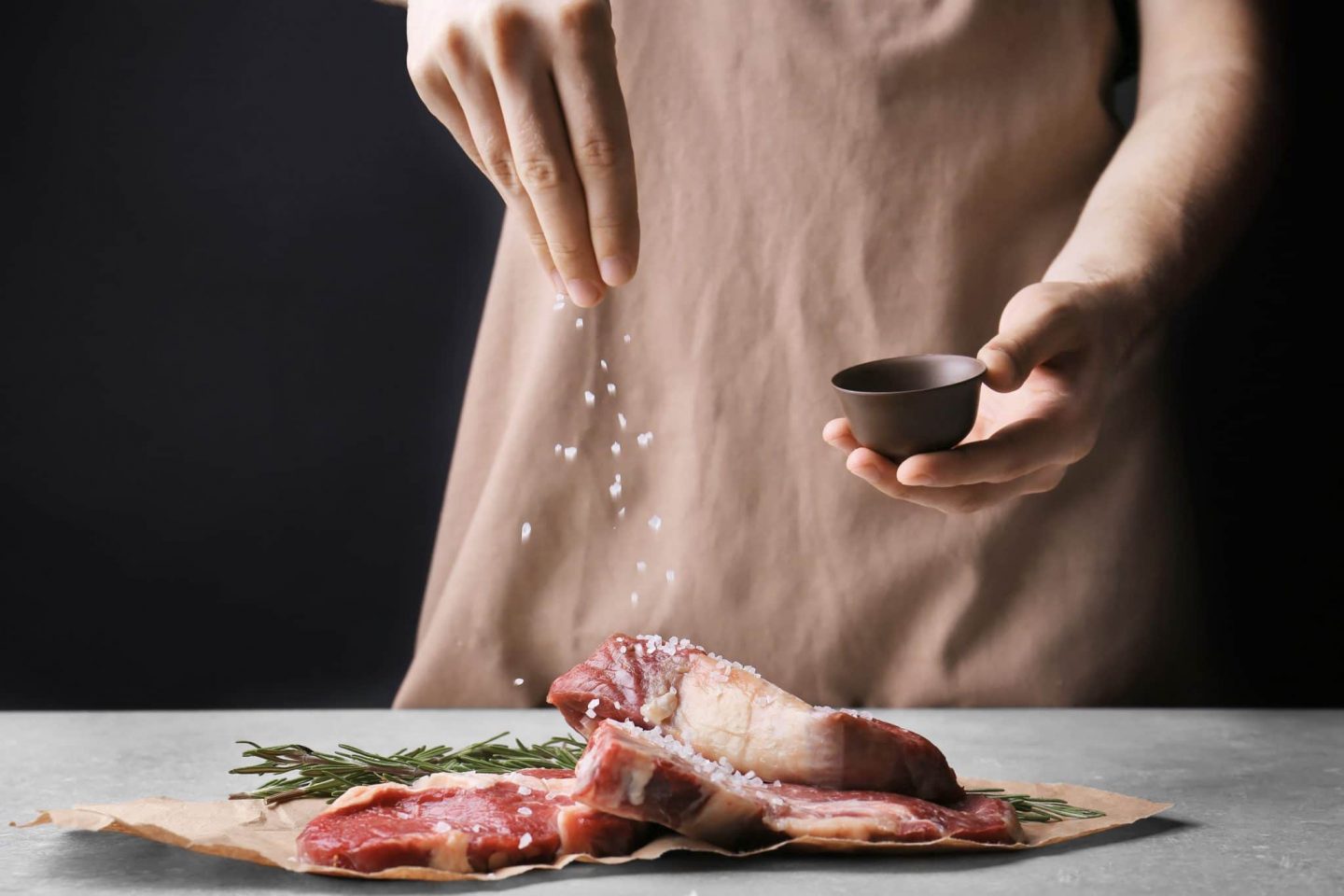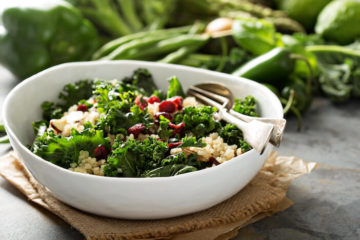Table salt, Sea salt and Co. - The great salt guide

Are we eating too much salt? According to the British Heart Foundation, working age adults in England consume 8.4 g of salt a day. This is higher than the amount recommended by the NHS. So, how much salt should we really be consuming and why is there a limit to our salt consumption? This and many other interesting facts about salt can be found in this article.
Facts about salt

What is salt and what do we need it for?
Salt is the abbreviation for the household table salt, or cooking salt and is used to flavour food. It consists of 97 percent sodium chloride and 3 percent magnesium, calcium and potassium.The body needs sodium and chloride, among other things, for maintaining fluid balance and regulating blood pressure, which is why table salt is so important for us. In addition, table salt is also used in the food industry as it can, for example, make products tasty and long lasting.
What types of salt are there?
| Name | Description |
|---|---|
| Table salt |
|
| Sea salt |
|
| Rock salt |
|
| Iodised salt |
|
| Primal salt |
|
Which salt is best?
Fleur de Sel, himalayan salt or crystal salt are often touted on the market as the healthiest and best variants, but what distinguishes them from conventional table salt? In the commercially available table salt, along with sodium chloride, you often also find other various minerals such as iodine or fluoride for the supposed prevention of thyroid diseases or caries. In addition to these minerals and trace elements, the table salt also contains free-flowing aids or, in the case of many sausage products, sodium nitrite, which are not good for your body.Therefore, the following applies: The fewer additives there are in your table salt, the better the salt is for you. Natural salts can be, for example, fleur de sel, certain sea salts or also crystal salts. Ready meals usually contain cheap cooking salts, which is why they should be avoided. Therefore if possible when cooking, use natural table salt.
How much table salt should we eat?

The British Heart Foundation recommends using less salt and minimizing the amount of foods high in salt. In total, the recommendation of a maximum of 6 grams of salt per day applies. This corresponds to about one teaspoon of table salt with food daily.
What happens if we eat too much salt?

If we consume more than 6 grams of salt daily, it has a negative effect on our body. Excessive salt consumption, for example, leads to high blood pressure which, at almost 40 percent, is the most common cause of death. A high consumption of salt can also lead to weight gain because the salt has an appetizing effect. In addition to weight gain and high blood pressure, a high intake of salt can also trigger infections, which in turn can cause diseases.
Tips: How can I avoid consuming too much salt?

To minimize negative consequences for your health, you should keep your salt intake below the 6 grams per day. Here you can find out which foods you should avoid and which things you should consider.
Beware of the following salt traps:
crisps, ham, sausage, ready-meals, cheese, nibbles
Foods with high salt content
| Food | Salt content in g per 100 g |
|---|---|
| Salami | 5.4 g |
| Peanut crisps | 1.9 g |
| Processed cheese | 3.1 g |
| Potato crisps | 1.4 g |
| Feta cheese | 2.3 g |
| Sliced bread | 1.4 g |
| Pretzel sticks | 4.6 g |
| Processed meats | 5.3 g |
How to reduce your salt consumption
- Reduced processed foods
- Use as many natural products as possible, such as fruits, vegetables or cereals
- Refine your food with herbs and spices instead of salt
- Natural high-quality table salts, but economical
- Reduce your salt intake in small steps to get your body used to it
- Try your food first before adding salt out of habit
Conclusion: Table salt
The term salt includes all forms of table salt, such as sea salt, iodized salt, rock salt or crystal salt. The fewer additives in your table salt, the better. In general, pay attention to your salt consumption, as less table salt can have a positive effect on your health. An increased salt intake of more than 6 grams daily can cause weight gain, high blood pressure and infections. To keep your salt consumption low, it is best to refine your food with herbs, spices and only sparingly with natural salt. Make sure to avoid manufactured products and instead use a lot of unprocessed foods, such as fruits and vegetables.
You don’t know how to cook with lots of fruit and vegetables? Then take a look at our recipes here.
Frequently Asked Questions
Why does the body need salt?
The sodium chloride, which is present in 97 percent of the table salt, is needed, among other things, for the maintenance of fluid balance or the regulation of high blood pressure.
What happens if I consume too much salt?
Too much salt in the diet can, for example, lead to high blood pressure, weight gain or inflammatory reactions. The NHS state that adults should eat no more than 6 g of salt a day (2.4 g sodium) – that’s around 1 teaspoon.
How can I reduce the amount of salt in my diet?
If you want to reduce your salt consumption, it is best to avoid ready meals and use unprocessed foods as much as possible. When seasoning dishes, you can use spices and herbs instead of table salt.
Sources
- Landschaft Leben (2021): Herstellung Salz
- BMEL (2021): Salzkonsum in Deutschland: Ergebnisse der DEGS Studie
- Zentrum der Gesundheit (2021): Salz: Das Gold der Erde
- DGE (2016): Speisesalz FAQs
- DGE (2021): Vollwertig essen und trinken nach den 10 Regeln der DGE
- NDR (2021): So wirkt zu viel Salz auf die Gesundheit
- Verbraucherzentrale (2021): Hier versteckt sich das meiste Salz
- British Heart Foundation (2022) : We’re all eating too much salt
- NHS (2021): Salt



